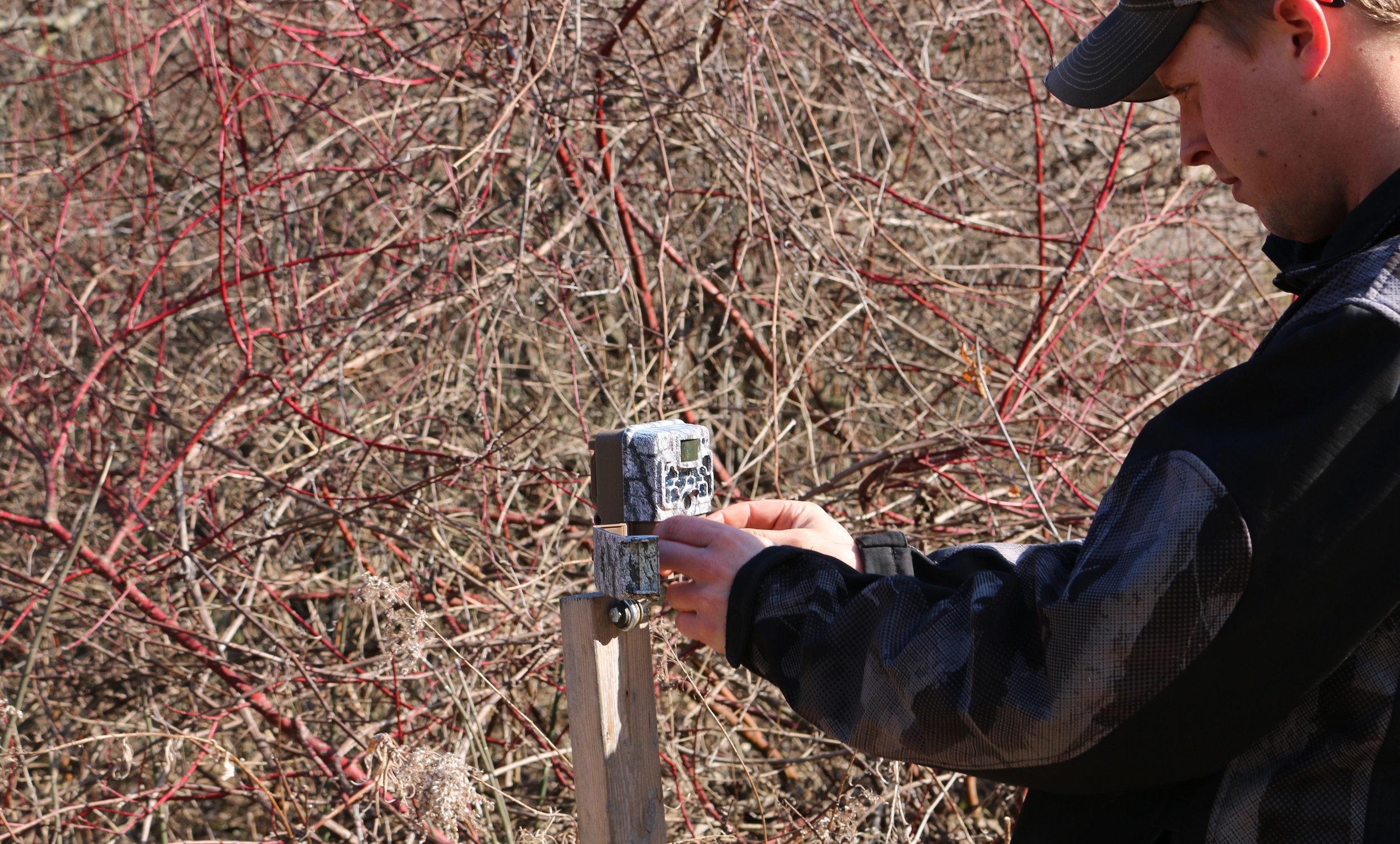One of my favorite things about deer hunting is checking trail cameras. I know some hunters out there that aren’t big fans, but I’d venture to guess that a large majority of you reading this like to check trail cameras and see pictures of bucks just as much as I do. The thrill of flipping through an SD card can be pretty exhilarating, especially when you land on a photo of a mature buck. When it comes to trail cameras, you can easily fall into a trap of relying on the information they produce to plan 100% of your hunts. The goal of this article is to dissuade you from hunting like this, and not to fall into that trap, especially this time of year.
Night Time Photos
During early and mid-October, no matter where your trail cameras are, this is when you’ll get the most nighttime photos. Daylight trail camera photos will probably become less and less, but don’t let that deter you from hunting. Depending on how much property you have access to hunt, you can look at it a couple different ways. If you are able to, take that information you are getting from a buck showing up during the cover of darkness and try to figure out where he’s coming from. Is there any type of move you can make to push back closer to his bedding and possibly have a run in with him during daylight?

In other situations (like mine currently) I’ve got photos of a couple different mature bucks, mostly at night, but I’ve only got permission on a very small piece of private and I’m not able to push back closer to bedding because that’s on a property I cannot hunt. However, I will be hunting that stand when conditions are perfect, correlating with a cold front. I’ve got a few daylight photos, as recent as a few weeks ago, so I know when the right conditions present themselves, there’s a chance one of those bucks will come by during legal shooting hours, and that’s when I need to be in the stand.
Trail Cameras Tell only a Small Story
As amazing as trail cameras are, what I always stress to people is that they are only telling you a small part of the story of what’s going on in the world of deer. Though they can help, don’t use them as a crutch. This time of year, most mature bucks aren’t moving very far during daylight, and if your trail camera isn’t in the right spot, a buck could easily be walking by every night just behind the camera or out of range.
If you have the ability to scout a new property, what I like to do is go in and scout for hot sign. I might set up where I think is a good spot, and when I leave I’ll throw up a trail camera. When I come back to hunt again, I’ll check the camera and correlate what I have on it with any new sign or lack thereof that I see. If I can confirm an identity of a buck through a trail camera, that will give me a better idea of what’s in the area. If I don’t get a mature buck on camera, but there’s still really good sign, I might move the camera and continue to hunt the area. What I’m really getting at here, is that if there isn’t a mature buck on camera, don’t automatically write the spot off.
Final Thoughts
So often, hunters won’t even hunt an area until they have daylight photos of a buck. I think that strategy can be flawed, especially during early and mid-October. The problem is if you wait until you see a buck move in daylight, you could be too late. I’ve got three different bucks on the same trail camera that I would shoot no question. Most of the photos are an hour to two after shooting light in the evening. I’ve got intermittent photos of them in the last hour of the day over the course of the last month. If I waited right now until I got daylight photos again, I could miss my opportunity. Instead, I know they are in there, and when I’ve got the right conditions, I’m going in to hunt them regardless if they’ve shown up in daylight. I want to be in the stand the next time they move through in legal shooting light. If I wait for daylight photos, I could miss out on my chance. Don’t fall into this trap during the month of October.






